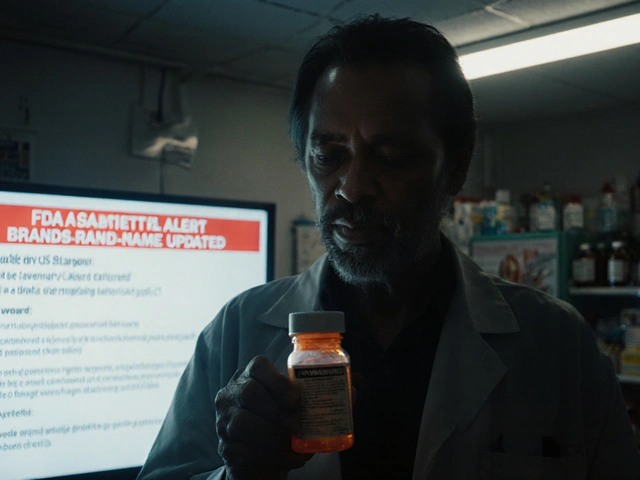Ampicillin Prescription: What You Need to Know Before Starting
Thinking about ampicillin? It’s a penicillin‑type antibiotic that fights many bacterial infections, from earaches to urinary tract bugs. Getting the right prescription means knowing the dose, how long to take it and what side effects might pop up.
How doctors decide on the dose
Dosage depends on the infection type, your age and kidney function. Adults usually get 250 mg to 500 mg every six hours for mild cases, but severe infections may need 1 g every six hours. Kids get a weight‑based dose—often 25 mg per kilogram daily, split into several doses. Your doctor will calculate the exact amount after checking your health record.
Typical uses for ampicillin
Ampicillin works well against common culprits like Streptococcus pneumoniae, E. coli, and Haemophilus influenzae. You’ll see it prescribed for:
- Respiratory infections (bronchitis, pneumonia)
- Ear, nose and throat infections
- Urinary tract infections
- Gastrointestinal bugs such as salmonella
If your lab results show the bug is resistant to ampicillin, your doctor will pick a different drug. Always ask for the test result if you’re unsure.
Taking the medicine correctly matters. Swallow tablets with a full glass of water; don’t crush them unless your pharmacist says it’s okay. If you have a liquid form, shake it well and use the provided measuring spoon or cup—regular kitchen spoons can give the wrong dose.
Finish the entire prescription even if you feel better after a few days. Stopping early lets some bacteria survive and become resistant, which makes future infections harder to treat.
Common side effects include mild stomach upset, diarrhea or a rash. If you notice severe itching, swelling, trouble breathing or a high fever, seek medical help right away—those could be signs of an allergic reaction.
People with kidney problems may need a lower dose because the drug leaves the body through the kidneys. Pregnant or breastfeeding moms should discuss risks with their doctor; ampicillin is usually considered safe but dosage tweaks might be needed.
Before you start, tell your doctor about any other meds you’re taking. Certain drugs, like oral contraceptives, can become less effective when paired with antibiotics, so you may need backup birth control.
If you miss a dose, take it as soon as you remember—unless it’s almost time for the next one. Don’t double up; that just raises the chance of stomach irritation.
Storing ampicillin is simple: keep tablets in a dry place at room temperature and liquids in the fridge if instructed. Toss any expired medication safely—you don’t want to accidentally take an old dose.
Bottom line: ampicillin can clear many infections quickly, but it works best when you follow the prescription exactly. Talk openly with your doctor about dosage, duration and any worries you have. That way you get rid of the bug without unnecessary side effects.
Buy Ampicillin Online Safely: A 2025 Australian Guide
Get the real lowdown on how to buy Ampicillin online in Australia, where to find legit pharmacies, and tips for a safe, legal purchase.
About
Online Pharmacies
Latest Posts


The Relationship Between Bisoprolol Fumarate and Anxiety
By Orion Kingsworth Apr 27, 2023

Top 10 Canadian Pharmacy Alternatives in 2024
By Orion Kingsworth Oct 30, 2024

FDA Safety Alerts: Understanding Communications About Generic Drug Problems
By Orion Kingsworth Nov 7, 2025

